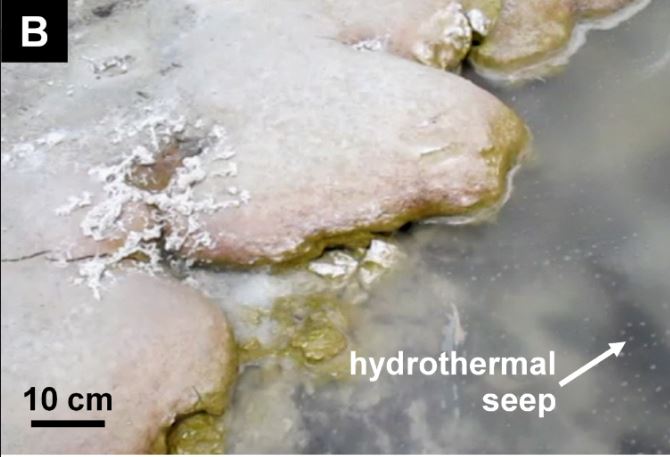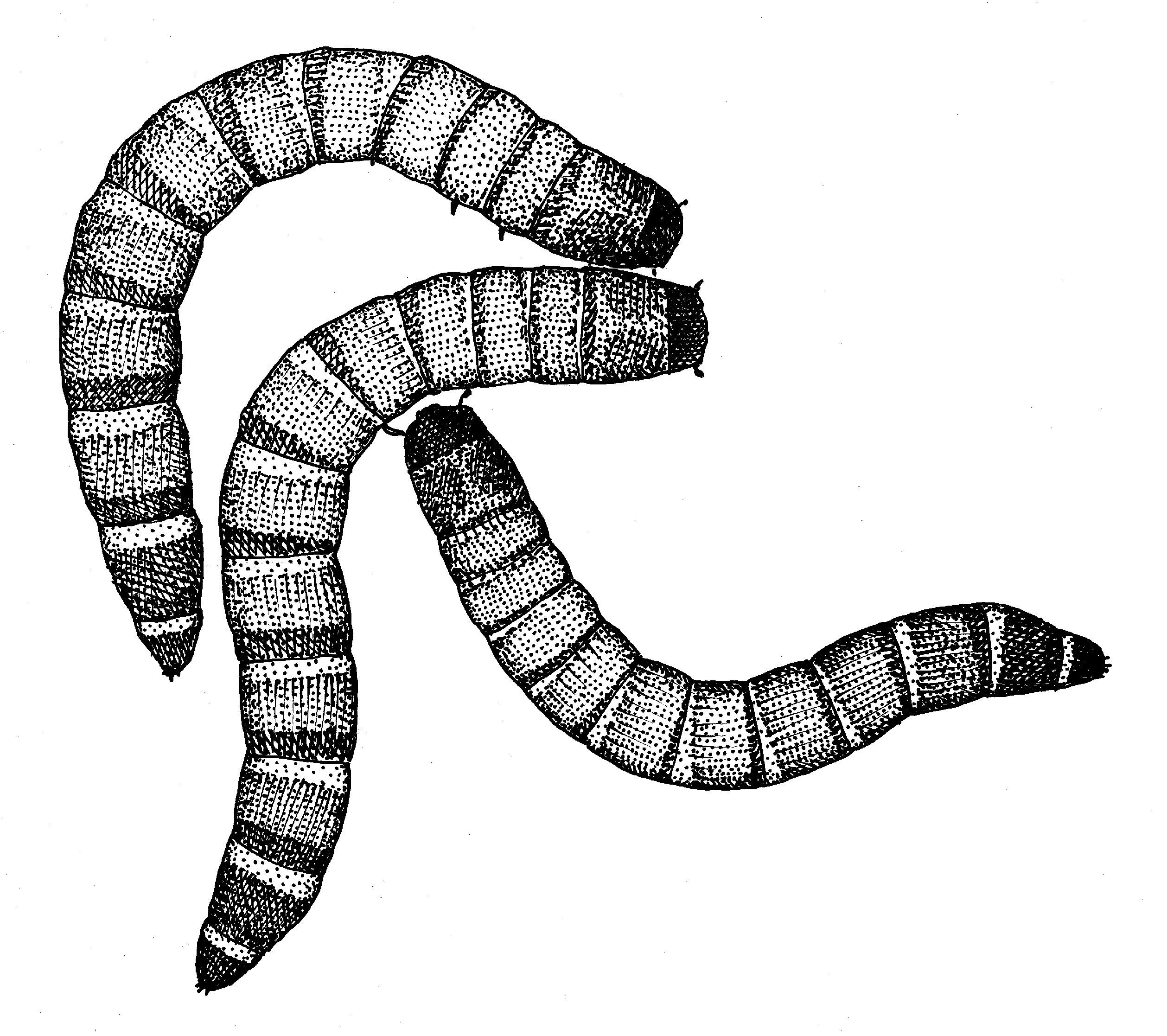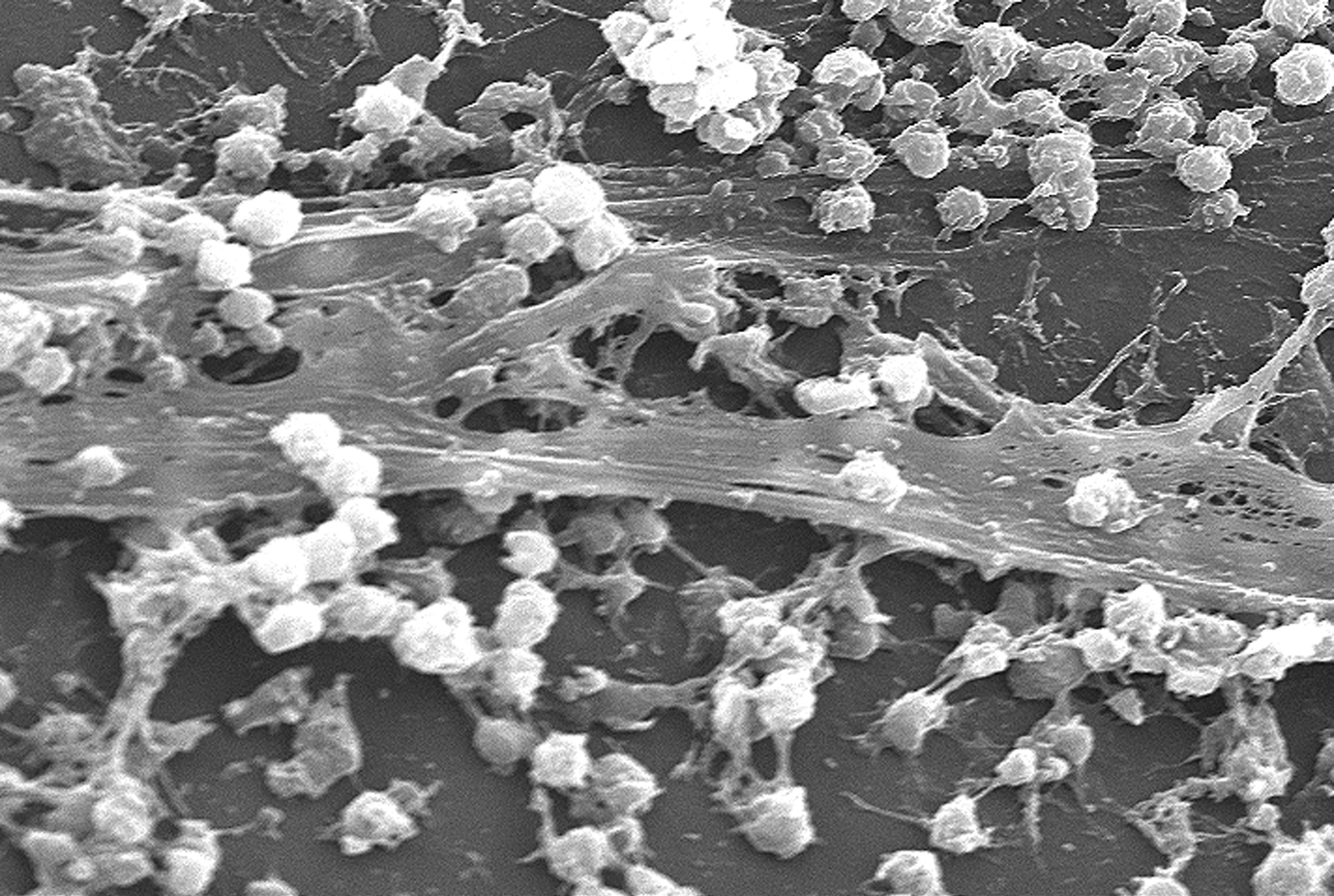|
Exiguobacterium
''Exiguobacterium'' is a genus of bacilli and a member of the low GC phyla of Bacillota. Collins'' et al''. first described the genus ''Exiguobacterium ''with the characterization of ''E. aurantiacum'' strain DSM6208T from an alkaline potato processing plant. It has been found in areas covering a wide range of temperatures (-12 °C—55 °C) including glaciers in Greenland and hot springs in Yellowstone, and has been isolated from ancient permafrost in Siberia. This ability to survive in varying temperature extremes makes them an important area of study. Some strains in addition to dynamic thermal adaption are also halotolerant (up to 13% added NaCl added to the medium), can grow within a wide range of pH values (5-11), tolerate high levels of UV radiation, and heavy metal stress (including arsenic). ''Exiguobacterium'' are globally diverse organisms that are found in a variety of environments including microbialites (Thrombolite from Pavilion Lake, BC and Stromatoli ... [...More Info...] [...Related Items...] OR: [Wikipedia] [Google] [Baidu] |
Exiguobacterium Aurantiacum
''Exiguobacterium aurantiacum'' is a Gram-positive, alkaliphilic, halotolerant, and non-spore-forming bacterium''.'' ''Exiguobacterium spp.'' are Facultative anaerobic organism, facultative anaerobes that have been isolated from a broad range of environments with ''Exiguobacterium aurantiacum,'' the type species, being isolated from alkaline potato-processing effluent in 1980. ''E. aurantiacum'' has been evaluated for use in bioremediation and as a source for natural pigments. Two case studies have associated ''E. aurantiacum'' with infections in humans. Name and classification The name ''Exiguobacterium aurantiacum'' derives from the Latin ''exiguus'' meaning "small" or "slender" and ''aurantiacus'' meaning "orange-colored". ''Exiguobacterium'' is one of 122 genera within the ''Bacillaceae'' family. As of 2024, the ''Exiguobacterium'' genus now hosts 19 species recognized by the International Code of Nomenclature of Prokaryotes (International Code of Nomenclature of Prokaryotes ... [...More Info...] [...Related Items...] OR: [Wikipedia] [Google] [Baidu] |
Exiguobacterium Marinum
''Exiguobacterium marinum'' is a bacterium from the genus of ''Exiguobacterium ''Exiguobacterium'' is a genus of bacilli and a member of the low GC phyla of Bacillota. Collins'' et al''. first described the genus ''Exiguobacterium ''with the characterization of ''E. aurantiacum'' strain DSM6208T from an alkaline potato pr ...''. References Bacillaceae Bacteria described in 2005 {{Bacilli-stub ... [...More Info...] [...Related Items...] OR: [Wikipedia] [Google] [Baidu] |
Exiguobacterium Profundum
''Exiguobacterium profundum'' is a Gram-positive, halotolerant, facultative anaerobic, moderately thermophilic and non-spore-forming bacterium from the genus of ''Exiguobacterium'' which has been isolade from a hydrothermal vent from the East Pacific Rise The East Pacific Rise (EPR) is a mid-ocean rise (usually termed an oceanic rise and not a mid-ocean ridge due to its higher rate of spreading that results in less elevation increase and more regular terrain), at a divergent tectonic plate bound .... References Bacillaceae Bacteria described in 2007 {{Bacilli-stub ... [...More Info...] [...Related Items...] OR: [Wikipedia] [Google] [Baidu] |
Laguna Socompa
Laguna Socompa is a small lake in the Salta Province of Argentina, at the foot of Socompa volcano. It covers an area of about and has an average depth of about . The lake is fed by arroyos and springs, some of which are hot springs. Its waters are very rich in arsenic and otherwise salty and slightly alkaline; these properties and the regionally high UV radiation give Laguna Socompa extreme environmental conditions. The lake features the world's highest known stromatoliths, mineralized structures formed by microorganisms. Stromatolith-forming microbes were the dominant lifeforms on Earth fossilized between 3.5 and 1.5 billion years ago and may give insight on early life on Earth. These stromatoliths are found on the southern shore of the lake and led to Laguna Socompa being declared a protected area. Geography and geomorphology Laguna Socompa is located at an elevation of in the Los Andes Department of the Salta Province in Argentina, close to the border with Chile. A rai ... [...More Info...] [...Related Items...] OR: [Wikipedia] [Google] [Baidu] |
Mealworm
Mealworms are the larval form of the yellow mealworm beetle, ''Tenebrio molitor'', a species of darkling beetle. The yellow mealworm beetle prefers a warmer climate and higher humidity. Male mealworm beetles release a sex pheromone to attract females to mate. ''Tenebrio molitor'' has been used in biomedical research. Mealworms can be a dietary source for animals and humans. They are also considered pests, especially to food storage. Description Like all holometabolic insects, ''T. molitor'' goes through four life stages: egg, larva, pupa, and adult. Larvae typically measure about or more. Adults are generally in length. ''T. molitor'' is dark brown or black as an adult, with larvae up to long and adults up to long. The yellow mealworm beetle can be differentiated from other beetles, due to the linear grooves that are evenly divided and run along the abdomen. The beetle has only four tarsal segments on its hind legs. Most ground beetles, which are similar in size to ... [...More Info...] [...Related Items...] OR: [Wikipedia] [Google] [Baidu] |
Bacilli
Bacilli is a Taxonomy (biology), taxonomic Class (biology), class of bacteria that includes two orders, Bacillales and Lactobacillales, which contain several well-known pathogens such as ''Bacillus anthracis'' (the cause of anthrax). ''Bacilli'' are almost exclusively gram-positive bacteria. The name ''Bacillus'', capitalized and Italics, italicized, refers to a specific genus of bacteria. The name Bacilli, capitalized but not italicized, can also refer to a less specific taxonomic group of bacteria that includes two orders, one of which contains the genus ''Bacillus''. When the word is formatted with lowercase and not italicized, 'bacillus', it will most likely be referring to shape and not to the genus at all. Ambiguity Several related concepts make use of similar words, and the ambiguity can create considerable confusion. The term "''Bacillus''" (capitalized and italicized) is also the name of a genus (''Bacillus anthracis'') that, among many other genera, falls within the cl ... [...More Info...] [...Related Items...] OR: [Wikipedia] [Google] [Baidu] |
Biofilm
A biofilm is a Syntrophy, syntrophic Microbial consortium, community of microorganisms in which cell (biology), cells cell adhesion, stick to each other and often also to a surface. These adherent cells become embedded within a slimy extracellular matrix that is composed of extracellular polymeric substances (EPSs). The cells within the biofilm produce the EPS components, which are typically a polymeric combination of extracellular polysaccharides, proteins, lipids and DNA. Because they have a three-dimensional structure and represent a community lifestyle for microorganisms, they have been metaphorically described as "cities for microbes". Biofilms may form on living (biotic) or non-living (abiotic) surfaces and can be common in natural, industrial, and hospital settings. They may constitute a microbiome or be a portion of it. The microbial cells growing in a biofilm are physiology, physiologically distinct from planktonic cells of the same organism, which, by contrast, ... [...More Info...] [...Related Items...] OR: [Wikipedia] [Google] [Baidu] |
Phylogeny
A phylogenetic tree or phylogeny is a graphical representation which shows the evolutionary history between a set of species or Taxon, taxa during a specific time.Felsenstein J. (2004). ''Inferring Phylogenies'' Sinauer Associates: Sunderland, MA. In other words, it is a branching diagram or a tree (graph theory), tree showing the evolutionary relationships among various biological species or other entities based upon similarities and differences in their physical or genetic characteristics. In evolutionary biology, all life on Earth is theoretically part of a single phylogenetic tree, indicating common ancestry. Phylogenetics is the study of phylogenetic trees. The main challenge is to find a phylogenetic tree representing optimal evolutionary ancestry between a set of species or taxa. computational phylogenetics, Computational phylogenetics (also phylogeny inference) focuses on the algorithms involved in finding optimal phylogenetic tree in the phylogenetic landscape. Phylogene ... [...More Info...] [...Related Items...] OR: [Wikipedia] [Google] [Baidu] |
Genome Taxonomy Database
The Genome Taxonomy Database (GTDB) is an online database that maintains information on a proposed nomenclature of prokaryotes, following a phylogenomic approach based on a set of conserved single-copy proteins. In addition to resolving paraphyletic groups, this method also reassigns taxonomic ranks algorithmically, updating names in both cases. Information for archaea was added in 2020, along with a species classification based on average nucleotide identity. Each update incorporates new genomes as well as automated and manual curation of the taxonomy. An open-source tool called GTDB-Tk is available to classify draft genomes into the GTDB hierarchy. The GTDB system, via GTDB-Tk, has been used to catalogue not-yet-named bacteria in the human gut microbiome and other metagenomic sources. The GTDB is incorporated into the '' Bergey's Manual of Systematics of Archaea and Bacteria'' in 2019 as its phylogenomic resource. Methodology The genomes used to construct the phyloge ... [...More Info...] [...Related Items...] OR: [Wikipedia] [Google] [Baidu] |
The All-Species Living Tree Project
The All-Species Living Tree' Project is a collaboration between various academic groups/institutes, such as ARB, SILVA rRNA database project, and LPSN, with the aim of assembling a database of 16S rRNA sequences of all validly published species of ''Bacteria'' and ''Archaea''. At one stage, 23S sequences were also collected, but this has since stopped. Currently there are over 10,950 species in the aligned dataset and several more are being added either as new species are discovered or species that are not represented in the database are sequenced. Initially the latter group consisted of 7% of species. Similar (and more recent) projects include the Genomic Encyclopedia of Bacteria and Archaea (GEBA), which focused on whole genome sequencing of bacteria and archaea. Tree The tree was created by maximum likelihood analysis without bootstrap: consequently accuracy is traded off for size and many phylum level clades are not correctly resolved (such as the Firmicutes). (Eukaryote ... [...More Info...] [...Related Items...] OR: [Wikipedia] [Google] [Baidu] |
National Center For Biotechnology Information
The National Center for Biotechnology Information (NCBI) is part of the National Library of Medicine (NLM), a branch of the National Institutes of Health (NIH). It is approved and funded by the government of the United States. The NCBI is located in Bethesda, Maryland, and was founded in 1988 through legislation sponsored by US Congressman Claude Pepper. The NCBI houses a series of databases relevant to biotechnology and biomedicine and is an important resource for bioinformatics tools and services. Major databases include GenBank for DNA sequences and PubMed, a bibliographic database for biomedical literature. Other databases include the NCBI Epigenomics database. All these databases are available online through the Entrez search engine. NCBI was directed by David Lipman, one of the original authors of the BLAST sequence alignment program and a widely respected figure in bioinformatics. GenBank NCBI had responsibility for making available the GenBank DNA seque ... [...More Info...] [...Related Items...] OR: [Wikipedia] [Google] [Baidu] |
List Of Prokaryotic Names With Standing In Nomenclature
List of Prokaryotic names with Standing in Nomenclature (LPSN) is an online database that maintains information on the naming and taxonomy of prokaryotes, following the taxonomy requirements and rulings of the International Code of Nomenclature of Prokaryotes. The database was curated from 1997 to June 2013 by Jean P. Euzéby. From July 2013 to January 2020, LPSN was curated by Aidan C. Parte. In February 2020, a new version of LPSN was published as a service of the Leibniz Institute DSMZ, thereby also integrating the Prokaryotic Nomenclature Up-to-date service and since 2022 LPSN is interconnected with the Type (Strain) Genome Server (TYGS), DSMZ's high-throughput platform for accurate genome-based taxonomy. See also * Code of Nomenclature of Prokaryotes Described from Sequence Data References External links List of Prokaryotic names with Standing in Nomenclature [...More Info...] [...Related Items...] OR: [Wikipedia] [Google] [Baidu] |



